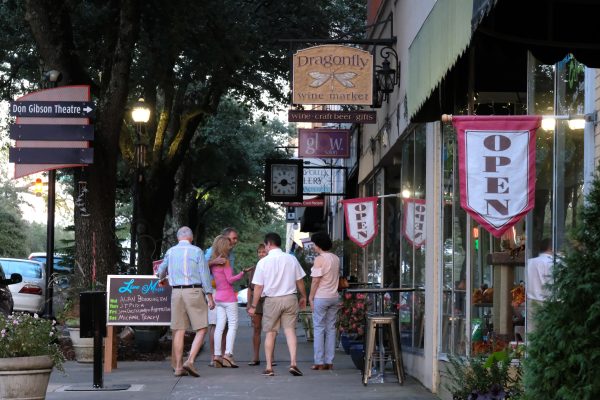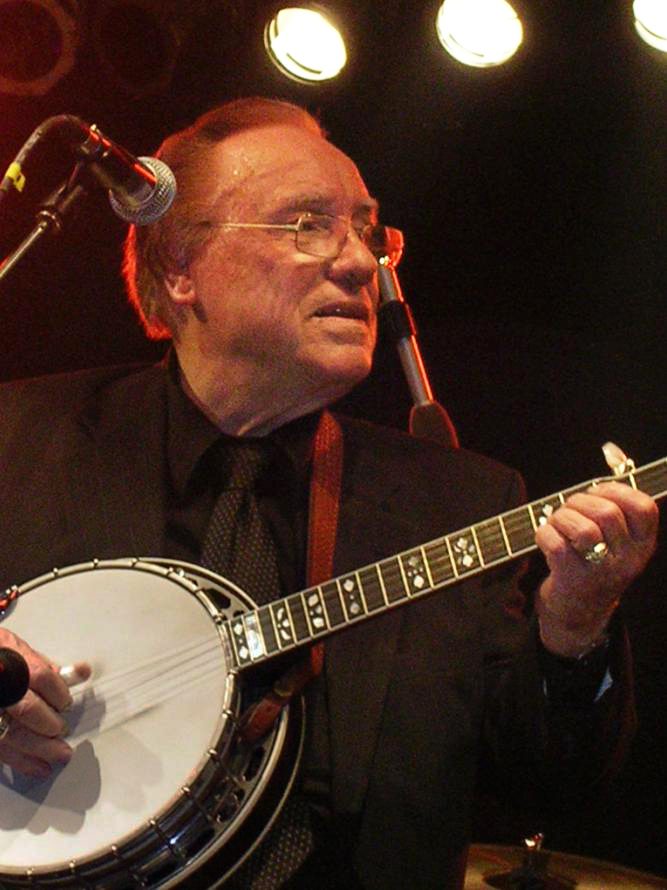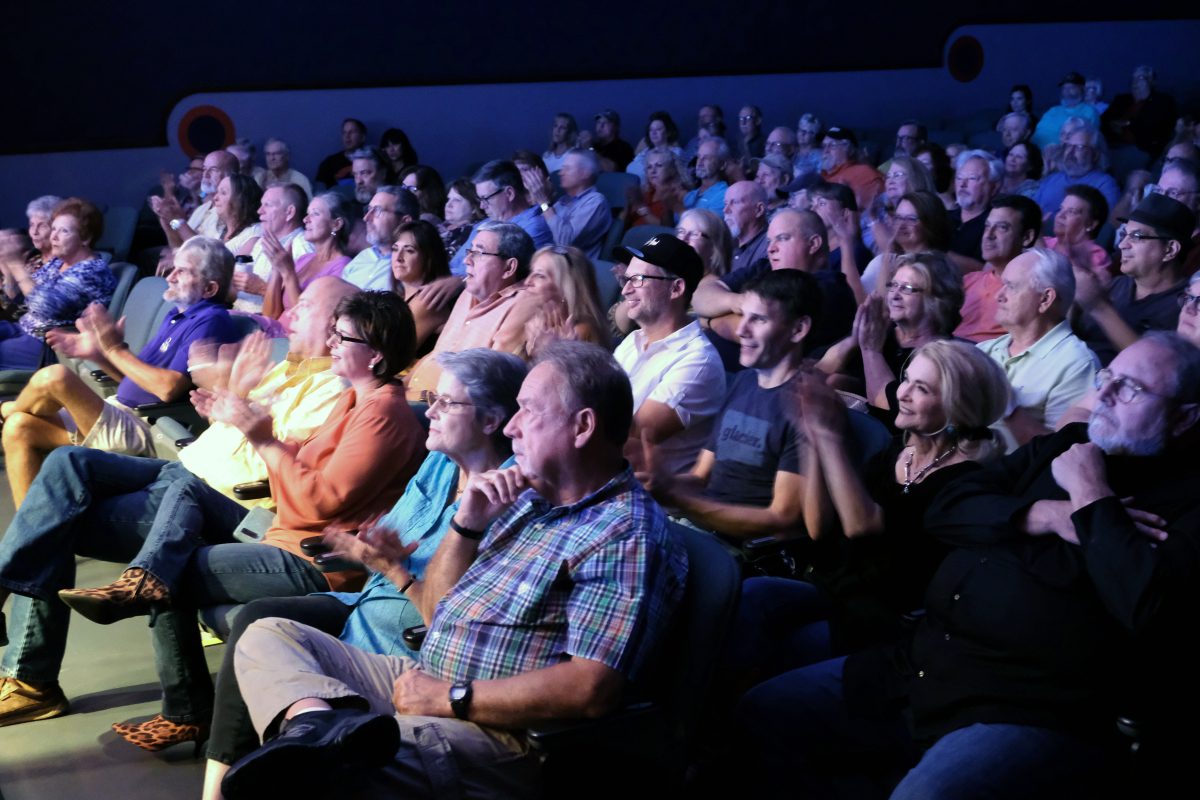Finding the Music, Part 3: ‘A 38-year overnight success story’

This is the third part in a three-part series. Read Part 1: Turning to musical heritage to fuel the future and Part 2: Looking for one ‘unique asset’ to catch up on the story.
The revivalists in Shelby focused on “Uncle Earl” Scruggs and Don Gibson, approaching the county, the courthouse’s owner, about a first-rate Scruggs exhibit and arranged to lease it for $1 a year. The city of Shelby had bought the empty theater 30 years earlier and was threatening to tear it down for a parking lot, until task force members asked to rent the space for the same amount, said Anthony, the mayor.
They hired an executive director. A $24,000 state grant allowed them to get input from consultants and state cultural resource officials. They included Tom Hanchett, retired staff historian for the Levine Museum of the New South in Charlotte, noted Southern scholar Bill Ferris at UNC Chapel Hill and N.C. Arts Council chief Wayne Martin. They brought in experts to conduct surveys and feasibility studies.
The project got the blessings — and artifacts — from the Scruggs family in Nashville, Tenn., and Gibson’s widow, Bobbi, also in Nashville.
By 2007, the task force was ready to make a pitch for donations, but the Great Recession of 2008 forced them to put fund-raising on hold. As the economy improved, they restarted with a goal of raising $5.5 million. They raised more than $9 million — from local donations, state and federal grants and money from a local hotel-occupancy tax.
Before he died in 2012, Earl Scruggs made three trips to Shelby for fundraising concerts. “He was very involved in the project and wanted to see it happen,” J.T. Scruggs said.
The Carolinas Urban-Rural ConnectionA special project from the UNC Charlotte Urban Institute |
|---|
They used $3 million to transform the Gibson Theatre, hiring an acoustician to engineer a pristine sound. They installed cozy seats and built spiffy Art Deco-inspired restrooms. The theater brings in touring acts that include comedians, singers and groups from all genres, such as Ricky Skaggs, Edwin McCain and Chubby Checker and The Lettermen from the 1960s.
In the lobby, there’s a small exhibit of Gibson photos and artifacts from his performing days. On the theater’s former parking lot, they built a space that serves as a reception room during shows. To help with yearly expenses, they rent the space for parties, show movies on Thursdays and host songwriting symposiums.
The rest went to transforming the courthouse into the Earl Scruggs Center: Music & Stories From the American South, with the interactive museum on the ground floor and meeting/reception room in the former courtroom upstairs.
Mississippian Cissy Anklam, designer of the B.B. King Museum in Mississippi and former Newseum chief curator in Washington, D.C., led a team of designers, fabricators, a photo archivist and script writer, builder and architect Holland.
“We couldn’t just go out and throw a bunch of artifacts on a shelf,” Plaster said. “Earl was the best at what he did. Don was the best. We had to build the best.”
Mingling among the exhibit is a life-size statue of a young Earl Scruggs in signature suit and Stetson hat. He holds a banjo with picks stuck to his fingers. Instruments from the Scruggs family are displayed, including the banjo on which 10-year-old Earl mastered the three-finger picking style at age 10.
Large photos trace Earl’s life: From farm boy to mill worker at the Lily Mill in Shelby to playing banjo with Kentuckian Bill Monroe’s Blue Grass Boys. The narrative weaves in the rise — and fall — of mill life in the Carolinas Piedmont and the sounds, cultural traditions, milestones and social structures of the American South. There are oral histories and a touch-screen table with the history of music and a “pick-n-play” display with Earl’s songs. There’s even a display explaining the difference between clawhammer, two-finger and three-finger banjo picking.
The Scruggs Center draws 10,000 visitors a year — more than half from outside the county, Plaster said.
 Who were Earl Scruggs and Don Gibson? Meet the musicians.
Who were Earl Scruggs and Don Gibson? Meet the musicians.
Jenkins said the Shelby revival is his favorite among the 30 projects he’s helped. Nine years after he met with Destination Cleveland County, he drove through Shelby just to see the results of the group’s work.
“I was absolutely blown away,” he said. “It’s one of the finest examples of a community coming together to achieve something that I’ve ever witnessed. They had a team that really wanted to move forward.”
Historian Hanchett said Shelby showed uncommon commitment.
“If this celebration of Earl and Don had been a little exhibit in a storefront downtown, it wouldn’t have had the same impact,” he said after a recent lunchtime lecture at the center. “The Scruggs Center and Gibson Theatre are beacons that say Shelby is of national interest. They are good things for the spirit of a town.”
Catalysts triggering confidence
They’ve clearly been good for uptown’s rebirth.
Look around in all directions: You’ll see restaurants, a brewery, bakery, an olive oil shop, a wine shop — even a pet store downtown. Fine-dining Ni Fen Bistro, long an uptown Shelby fixture, left uptown and then returned to a larger space on South Lafayette. Inside, the eatery is dressed up with white tablecloths and a menu that would rival any restaurant in Charlotte.
The thrice-weekly Foothills Farmers Market at Shelby’s uptown City Pavilion draws outsiders from a 50-mile radius.
With attention to streetscapes, some blocks look like they could have been lifted out of Davidson or Chapel Hill. And people are living uptown again, over storefronts and in buildings renovated for apartments. More are coming. Plans are underway for a 12-mile “rail trail” along former Norfolk Southern tracks from Shelby to the S.C. border.
As of 2017, 88 percent of uptown’s spaces were occupied, according to Uptown Shelby figures.

The Don Gibson Theatre on a Friday night in uptown Shelby. Photo: Nancy Pierce.
Chris Canoutas was living in Raleigh in late 2007 when his father called that a fire had heavily damaged the popular Ichabod’s Eatery on South Lafayette, one of Shelby’s first restaurants to serve mixed drinks after city voters approved sales in 1992. Ichabod’s wasn’t reopening, and Nick Canoutas urged his son to come home and start a restaurant in the space.
At the time, the younger Canoutas didn’t know of the Scruggs/Gibson plans, and even as the Great Recession took root, he opened his wood-fired pizza joint. It was a tough go at first, but as the economy came back, Canoutas found his tables filling. A year later, the Gibson Theatre opened and now on show nights, business is up 25 to 30 percent, he said.
 Photo Gallery: See Shelby’s uptown revival.
Photo Gallery: See Shelby’s uptown revival.
“The theater and Scruggs Center definitely have had an impact,” Canoutas said. “There is a constant stream of people from out of town. You see a lot of people walking around town — something you surely didn’t see here 15 years ago.”
Newgrass (a modernization of bluegrass) Brewing Co., which opened in 2015 in the long-abandoned 1909 Hudson’s Department Store building, was another life boost. The idea was conceived on a beach trip by architect Holland and former county manager Dear, who’d retired in 2011.
They bought the building — it was caving in — from a non-profit and used heart pine reclaimed from a mill (an homage to the past) to construct the inside. With 12 craft beers brewed on-site, the brewery has become a rendezvous point for friends coming from Charlotte and Asheville, Holland said.
He doesn’t give the Scruggs Center and Gibson Theatre full credit for taking a chance on Newgrass — but much of it.
“I can’t say with complete certainty that this brewery never would have happened without the Scruggs Center and Gibson Theatre, but they gave us the confidence to move forward and build on what they started,” said Holland, who’s been working on uptown’s rebirth since he was a founding board member of Uptown Shelby 38 years ago. “Yet the resurgence of downtown really has been a joint effort over the years between a lot of people who care a lot about this community.
“You could say it’s been a 38-year overnight success story.”

The audience for a Friday night show at the Don Gibson Theatre in uptown Shelby. Photo: Nancy Pierce.
David Perlmutt